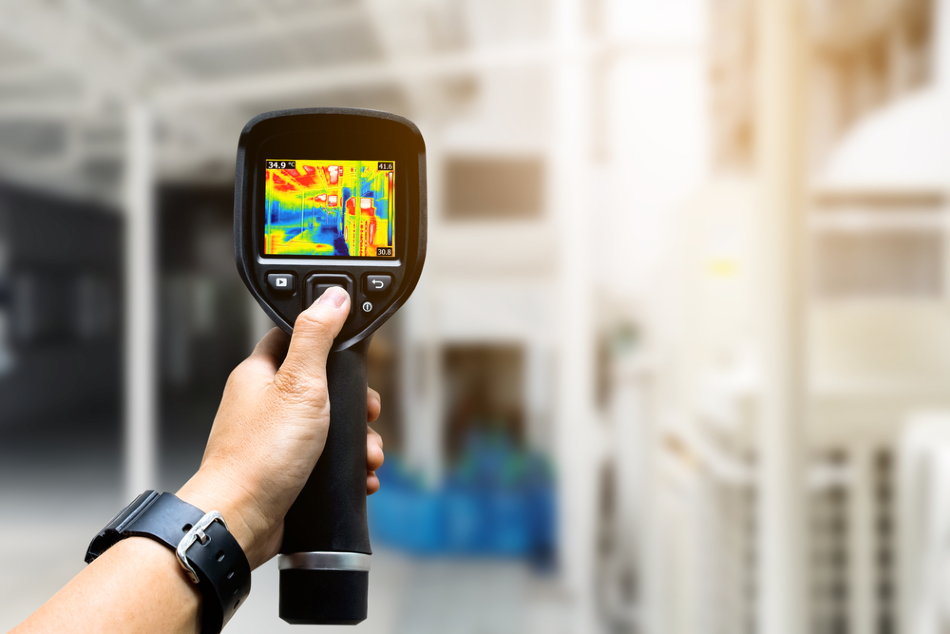By Kalwinder KaurJul 31 2013

Image Credit: Joyseulay/Shutterstock.com
Article updated on 09/03/20 by Ben Pilkington
A pyrgeometer is an instrument for measuring the infrared radiation spectrum in the atmosphere, which extends from 4,5 µm to 100 µm.
This instrument is sensitive to both short- and long-wave radiation in different ways. It is designed for material testing research as well as for atmospheric applications.
Long-wave radiation is emitted by all objects in the universe. However, the main purpose of a pyrgeometer is to assist in meteorological observations of atmospheric radiation by measuring the net radiation difference between the earth and the atmosphere.
Working Principle
The pyrgeometer works based on the principle that radiant energy is converted into heat energy, and that this energy can be measured by a thermopile.
This instrument consists of a silicone dome to isolate long-wave radiation from solar short-wave radiation during daylight hours. It also includes a vacuum-deposited interference filter with a transmission range of approximately 3.5 µm to 50 µm, and a shielded case to minimize the heating of the instrument from solar radiation.
Thermistors are employed to monitor the temperatures of the dome, case, and environmental thermal infrared irradiance.
A detector coated with black paint senses a net signal from various sources including emissions from the dome, case, and targets in its field of view.
The incoming radiation is absorbed by the detector, and the heat flows through the instrument body. The thermal gradient across the thermopile creates a voltage that is relative to the net radiation.
The spectral range of the incoming radiation is restricted by the filter that eliminates unwanted solar radiation. Thus, the thermal infrared irradiance can be measured in watts per square meter (W/m2).
The case is protected from solar radiation and its temperature is considered as the air temperature, which enables the device to provide the degree of thermal emission by the atmosphere. Conversely, the dome is unprotected from heat. Therefore, the difference between thermal emissions of the dome and case provides an erroneous signal which has to be eliminated.
Applications
Atmospheric radiation from water vapor, clouds, and CO2 are the core subjects of measurement for the pyrgeometer. It is also used for material testing research applications and low-temperature applications of the sensors applied in aircraft observations.
Products on the Market
Some examples of pyrgeometers currently available on the market:
CGR 3
Developed by Kipp and Zonen, the CGR 3 pyrgeometer is capable of generating a voltage that is proportional to net radiation in the far-infrared region. The device features a temperature sensor, silicon window, and solar-blind filter.
It also includes a newly designed sunscreen that covers both the body and connector to improve the accuracy of the device.
IR02 Pyrgeometer
The IR02 pyrgeometer is a sensor developed by Hukseflux Thermal Sensors to serve meteorological outdoor experiments. This instrument measures far-infrared radiation flux.
With the help of a thermopile sensor, the device generates a small output voltage that is relative to the flux created between the device and the object within the field of view. It can be directly connected to data-logging systems.
Advantages
The key benefits of the IR02 pyrgeometer are its ability to prevent dew deposition and its improved accuracy.
References and Further Reading
IR02 pyrgeometer (2020). [Online] Hukseflux Thermal Sensors. Available at: https://www.hukseflux.com/products/solar-radiation-sensors/pyrgeometers/ir02-pyrgeometer (Accessed on 6 March 2020).
CGR3 Pyrgeometer. [Online] Kipp & Zonen. Available at: https://www.kippzonen.com/ (Accessed on 6 March 2020.
Disclaimer: The views expressed here are those of the author expressed in their private capacity and do not necessarily represent the views of AZoM.com Limited T/A AZoNetwork the owner and operator of this website. This disclaimer forms part of the Terms and conditions of use of this website.